
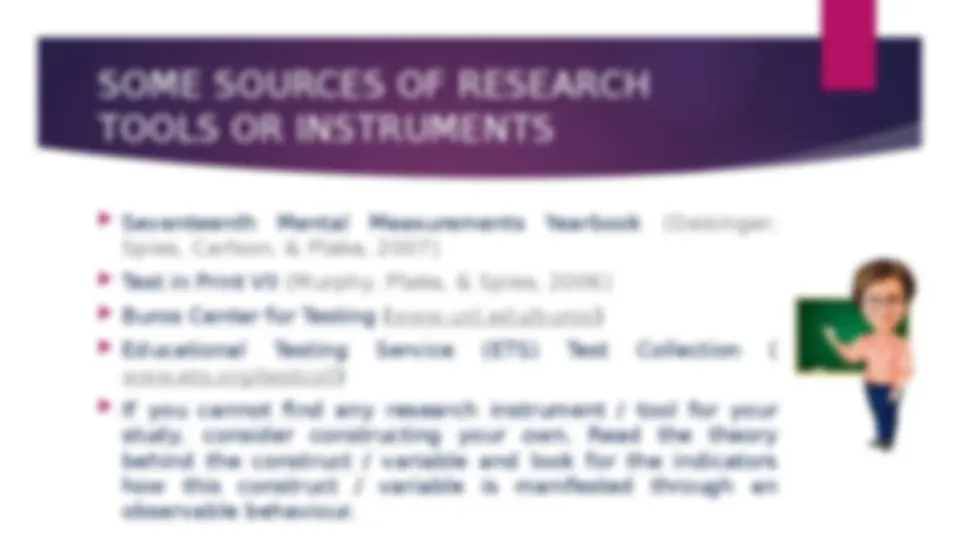
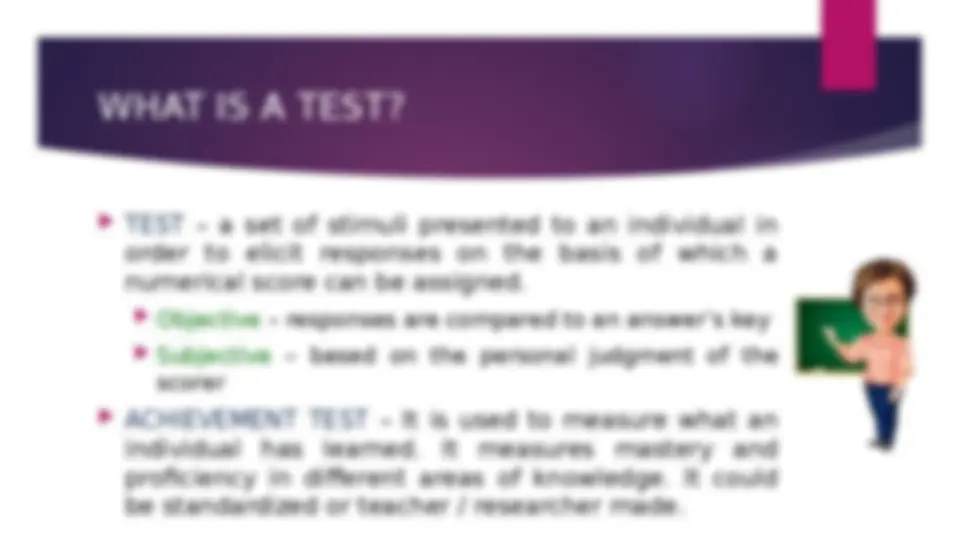
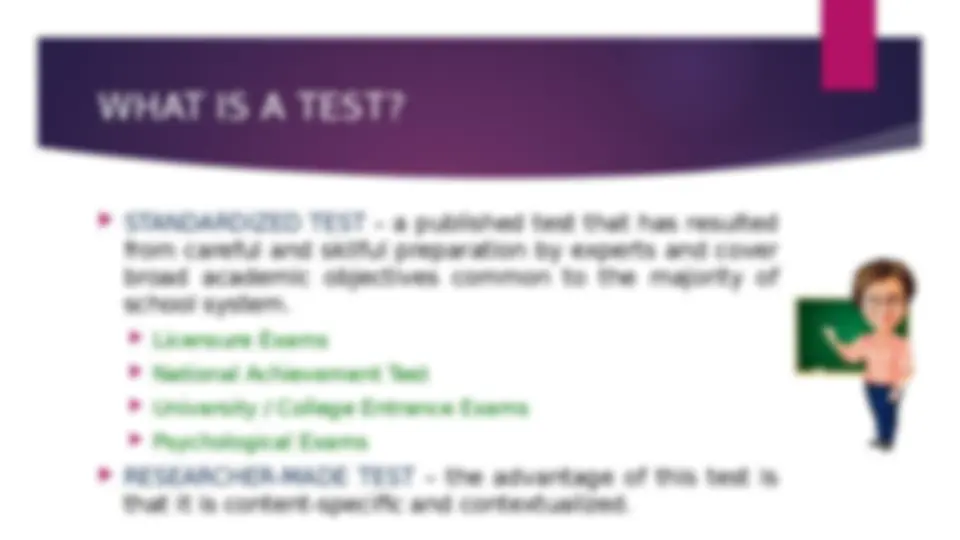
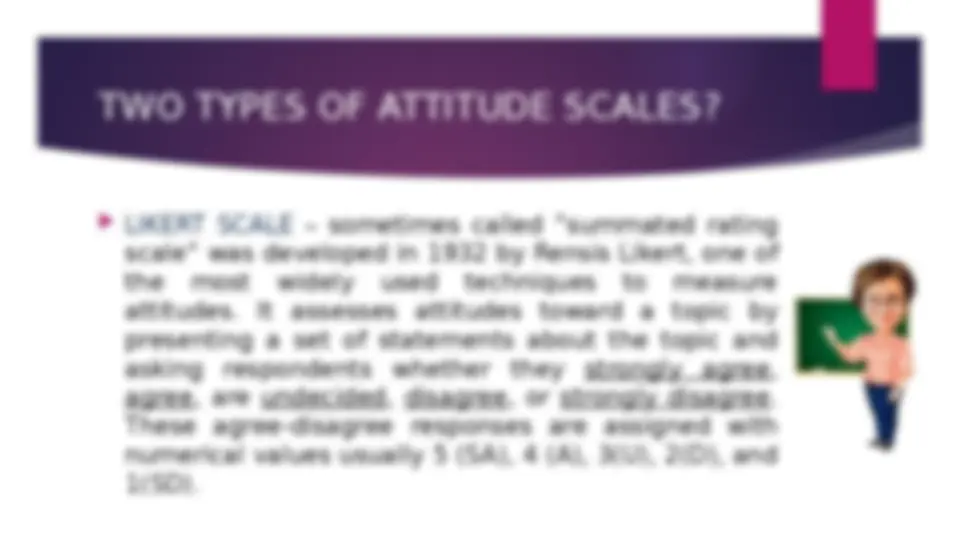
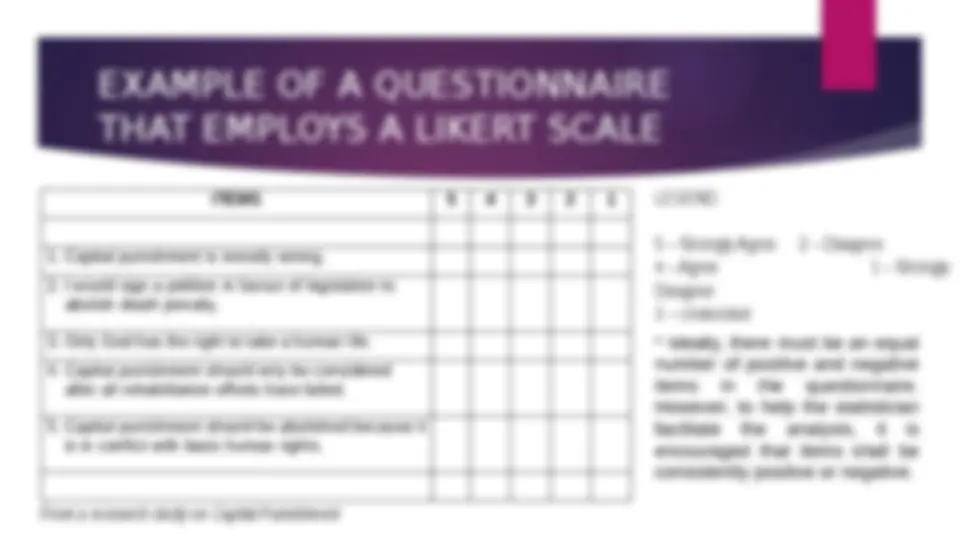
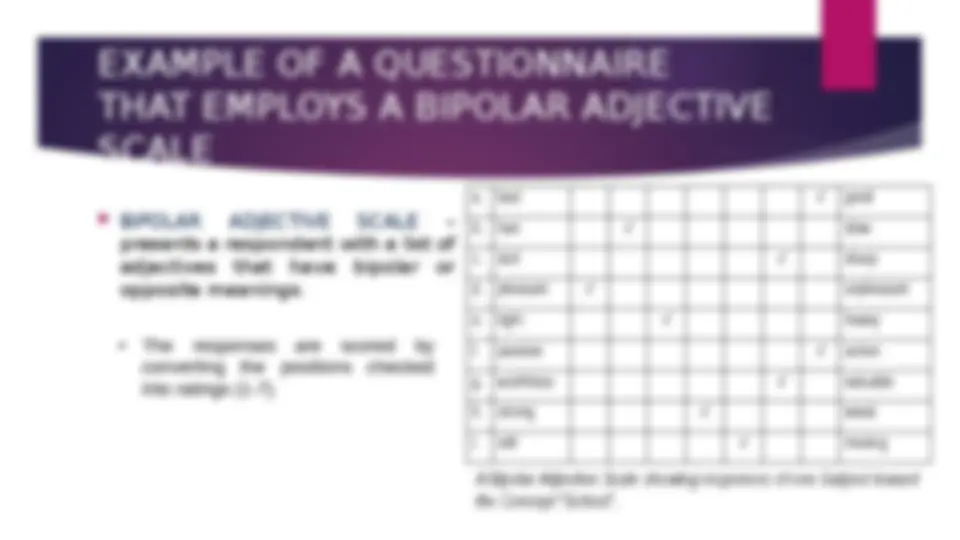
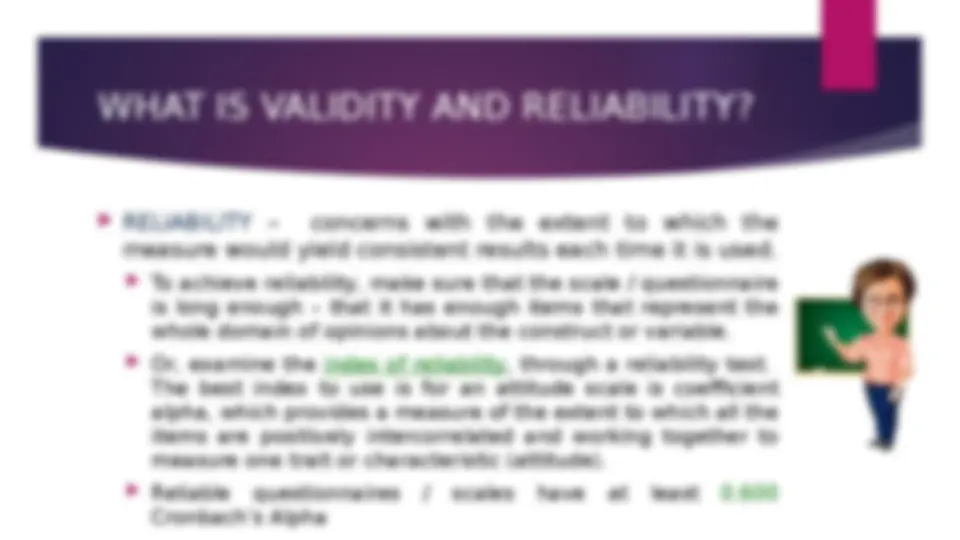



Study with the several resources on Docsity

Earn points by helping other students or get them with a premium plan


Prepare for your exams
Study with the several resources on Docsity

Earn points to download
Earn points by helping other students or get them with a premium plan
Community
Ask the community for help and clear up your study doubts
Discover the best universities in your country according to Docsity users
Free resources
Download our free guides on studying techniques, anxiety management strategies, and thesis advice from Docsity tutors
It is a research instrument. A powerpoint for social studies. It is important because ot tackle about the important instrument of social study
Typology: Lecture notes
1 / 14

This page cannot be seen from the preview
Don't miss anything!









DICKSON P. PAGENTE, LPT, PhD Subject Instructor
(^) Selecting appropriate and useful measuring instruments is critical to the success of any research study. (^) QUESTIONNAIRE (test, scale) (^) RUBRICS, EVALUATION TOOL (^) CHECKLIST (^) One must select or develop scales and instruments that can measure complex constructs or variables such as intelligence, achievement, personality, motivation, attitudes, aptitudes, interest, self-concept, etc. (^) Two ways to obtain these tools: (^) use one that has already been developed (adapt) (^) construct your own
(^) TEST – a set of stimuli presented to an individual in order to elicit responses on the basis of which a numerical score can be assigned. (^) Objective – responses are compared to an answer’s key (^) Subjective – based on the personal judgment of the scorer (^) ACHIEVEMENT TEST – It is used to measure what an individual has learned. It measures mastery and proficiency in different areas of knowledge. It could be standardized or teacher / researcher made.
(^) STANDARDIZED TEST – a published test that has resulted from careful and skilful preparation by experts and cover broad academic objectives common to the majority of school system. (^) Licensure Exams (^) National Achievement Test (^) University / College Entrance Exams (^) Psychological Exams (^) RESEARCHER-MADE TEST – the advantage of this test is that it is content-specific and contextualized.
(^) SCALE – used to measure attitudes, values, opinions, and other characteristics that are not easily measured by tests or other measuring instruments. Unlike tests, scales measure the degree to which an individual exhibits the characteristic of interest. (^) ATTITUDE SCALE – use multiple responses - usually responses to statements – and combine the responses into a single scale score. (^) Perception / Attitude / Belief Questionnaire
(^) LIKERT SCALE – sometimes called “summated rating scale” was developed in 1932 by Rensis Likert, one of the most widely used techniques to measure attitudes. It assesses attitudes toward a topic by presenting a set of statements about the topic and asking respondents whether they strongly agree, agree, are undecided, disagree, or strongly disagree. These agree-disagree responses are assigned with numerical values usually 5 (SA), 4 (A), 3(U), 2(D), and 1(SD).
(^) BIPOLAR ADJECTIVE SCALE – presents a respondent with a list of adjectives that have bipolar or opposite meanings. a. bad √ good b. fast √ slow c. dull √ sharp d. pleasant √ unpleasant e. light √ heavy f. passive √ active g. worthless √ valuable h. strong √ weak i. still √ moving A Bipolar Adjective Scale showing responses of one Subject toward the Concept “School”.
(^) RATING SCALE – presents a number of statements about a behaviour, an activity, or a phenomenon with an accompanying scales of categories. Low Medium High Personal appearance __________________________________________ Social acceptability
Speaking skills
1 2 3 4 5 6 7 One of the poorest speakers An average speaker One of the very best speakers How creative is this person? (check one) always has creative ideas
has many creative ideas
sometimes has creative ideas
Graphic Scale Graphic Scale Categorical Scale
(^) RELIABILITY – concerns with the extent to which the measure would yield consistent results each time it is used. (^) To achieve reliability, make sure that the scale / questionnaire is long enough – that it has enough items that represent the whole domain of opinions about the construct or variable. (^) Or, examine the index of reliability, through a reliability test. The best index to use is for an attitude scale is coefficient alpha, which provides a measure of the extent to which all the items are positively intercorrelated and working together to measure one trait or characteristic (attitude). (^) Reliable questionnaires / scales have at least 0. Cronbach’s Alpha